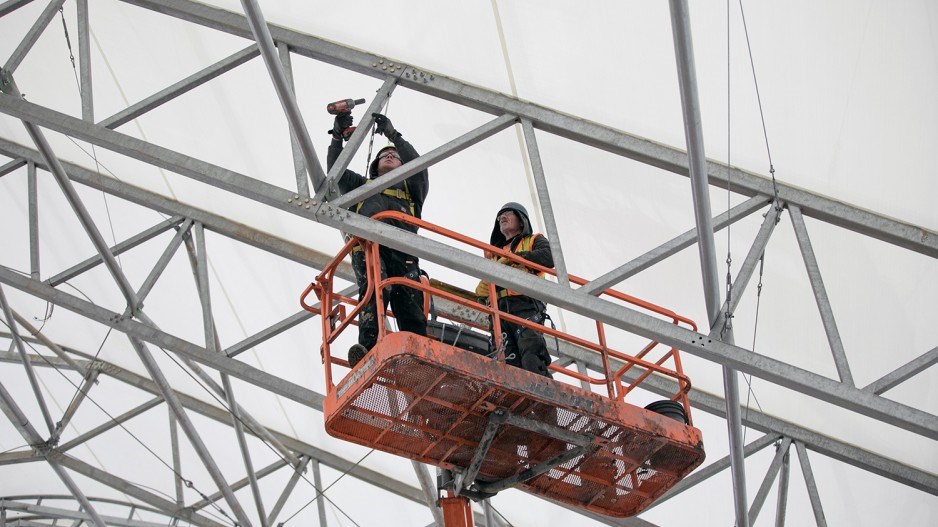The B.C. government will complete the Site C hydro-electric dam on the Peace River, despite the fact it is now expected to cost $10.7 billion, not $8.3 billion.
Premier John Horgan announced "with a heavy heart" the decision December 11. He slammed the previous Liberal government for approving the project without referring it first to the BC Utilities Commission (BCUC), and acknowledged that completing will be divisive, saying it will be a disappointment to some of his own friends and family.
"They got to the point of no return," Horgan said, adding that the previous Liberal government also mismanaged the BC Hydro, leading to a 24% increase in rates over four years, and leaving BC Hydro accounts "raided" to help the Liberals balance their own budget.
After referring the project to the BCUC, Horgan said the review it conducted confirmed that alternatives might have been cheaper to build than Site C, if the project weren't already so far along.
"They gave us, sadly, just one clear choice," Horgan said. "That was to proceed with a $10.7 billion project, or cancel that project and absorb $4 billion in construction and remediation costs."
Speaking directly to the project's opponent, which includes many with the NDP Party and even his own family, Horgan said, "I respect the strength of your convictions and your concerns about the future of BC Hydro and British Columbia.
"Although Site C will cost more than $10 billion to complete, those costs can be recovered over a long period of time by the sale of electricity," Horgan said. "Cancelling the project would mean an unavoidable $4 billion hit immediately, either on Hydro's books or on the books of the minister of Finance. The consequences of that would be a 12% rate increase almost immediately, and forgoing very important capital projects like schools and hospitals, bridges and transit and other initiatives right across British Columbia."
Horgan's government now faces multiple challenges, including finding ways to manage budget overruns, defending the decision in potential treaty infringement claims, exploring potential new markets for B.C. power and mollifying the Green Party and the environmental wing within its own party.
BC Hydro rates are anticipated to increase 30% over the next 10 years, regardless of Site C, but government says even with those increases, B.C.'s hydro rates are still lower than in many other jurisdictions.
The government said the rate impacts for cancelling Site C would have been a 12% BC Hydro hike over 10 years, starting in 2020, which would add $200 a year to the average residential BC Hydro bill, $192,000 to the average lumber mill, $180,000 to a medium sized data centre, and $372,000 to a large hospital.
Completing Site C, on the other hand, will require a 1.1% increase in both 2025 and 2026. The costs of paying for the project are spread over 70 years.
Had the government decided to assume BC Hydro's debt, absorbing $4 billion in sunk costs, termination fees and reclamation, it would wipe out 80% of BC Hydro's equity and add $120 million to $150 million in annual interest charges to the province, government officials said in a technical briefing December 11. The government said $4 billion is equal to building 11 hospitals or three Pattullo Bridges.
There are still two major components of the dam to be completed – the spillway and generating plants, and transmission lines, representing $5.8 billion in spending. An unredacted report to the BC Utilities Commission by Deloitte shows the estimated cost of the spillway contract to be $1.25 billion.
Site C's budget was $8.3 billion, with a project reserve of an additional $440 million. The government has now revised that to $10.7 billion, with a project reserve of $708 million.
The Site C dam has been controversial since the Gordon Campbell government announced in 2010 that it would move the project forward to an environmental review.
Although the project was reviewed by a joint federal-provincial environmental review panel, it was excluded by the Christy Clark government from being vetted by the BC Utilities Commission (BCUC).
The joint review panel determined that, compared with other energy alternatives such as wind power, Site C was the best alternative.
However, it questioned the timing of the project, saying that BC Hydro had failed to establish that it was needed to meet B.C.’s power needs. It also recommended having the project reviewed by the BCUC – a recommendation ignored by the Liberal government.
Harry Swain, who chaired the joint review panel, later came out to publicly denounce the project, saying it was not needed. He has argued that, should B.C. need additional power, there were other options, such as the Columbia River Treaty entitlement.
Making good on an election promise, Horgan’s government referred the project to the BCUC for a fast-track review but did not put the project on hold.
For story on reactions to Site C dam decision, see Treaty 8 nations to launch injunction against Site C.




